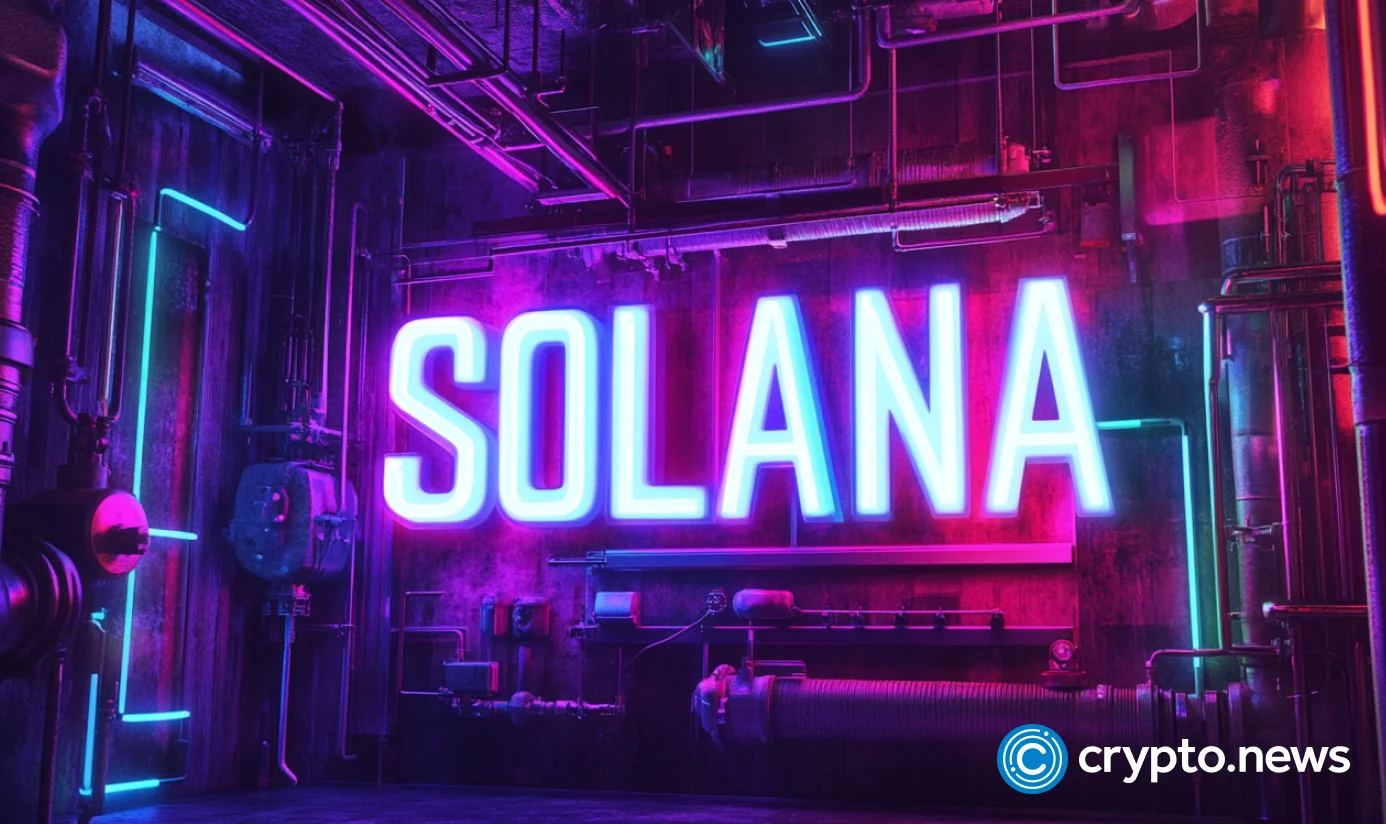India
Telegram Under Scrutiny in India, But Ban not Imminent: Reports
Published
4 months agoon
By
admin

“Locally, a Telegram ban will have a lasting negative impact on the business development and marketing of the more than 300 solid web3 projects from India,” said Ayush Ranjan, CEO of Huddle01, a DePIN dedicated to making real-time communication performant. “Millions of Indians are active members…disrupting this communication would also impact the price formation of projects’ tokens. If the ban goes through, people will have to move to other app.”
Source link
You may like


SCENE’s 2024 Person of the Year: Iggy Azalea


BTC Risks Falling To $20K If This Happens


Most Layer 2 solutions are still struggling with scalability


Here’s why Stellar Price Could Go Parabolic Soon


Perp-Focused HyperLiquid Experiences Record $60M in USDC Net Outflows


Experts say these 3 altcoins will rally 3,000% soon, and XRP isn’t one of them
crypto assets
India’s Ambiguous Crypto Policy: Time for Worldwide Unity
Published
6 days agoon
December 17, 2024By
admin

The Indian government stated in a recent declaration to Lok Sabha that there is no fixed timeline for the rollout of the comprehensive set of regulatory guidelines for virtual assets.
The government’s response followed queries posed by two Members of Parliament on what steps were being taken to set up a structured regulatory framework along with an expected timeline for such regulations.
Although the administration noted that it consulted with industry stakeholders and relevant international organizations both formally and informally, it asserted that policy efforts on VDA are needed globally in order to avoid regulatory arbitrage to ANI. India seeks to have effective regulation of borderless crypto assets emerge only through deep international cooperation.
BREAKING: 🇮🇳 Crypto regulation discussed in parliament: 🧵
1⃣ Comprehensive Framework: The government is working on a regulatory framework for VDAs but emphasizes the need for international collaboration to address their borderless nature and avoid regulatory arbitrage. pic.twitter.com/Njlvw48Urj
— Crypto India (@CryptooIndia) December 16, 2024
As taxation on VDA-related income already exists and with VDA transactions brought under the Prevention of Money Laundering Act since March 2023, the government said crypto assets are borderless and thus require international cooperation to prevent regulatory arbitrage. The adoption of the “G20 Roadmap on Crypto Assets” during India’s G20 Presidency brought forth the pressing need for collaborative action at the global level while urging all jurisdictions, especially emerging economies, to develop risk-sensitive regulation.
However, challenges linger as India navigates the path of innovation and investor protection alongside economic strength and financial stability. Given that VDAs transcend borders, the investor protection framework is seen as lacking without robust international cooperation. A clear regulatory timeline leaves market participants with clarity to contend with, as policies rooted in national interest as well as shifting global consensus about how to regulate digital assets continue to take shape.
These latest developments uphold a rising vulnerability in India’s quickly changing crypto sector. While it leads many countries in grassroots digital asset adoption, its popularity has also put it at the top of the list for many fraudsters.
The Andhra Pradesh scam, the most recent in a string of high-profile crypto-related frauds, fits a mold that has emerged elsewhere this year in India, where the lure of appealing monthly returns and aggregates framed as affiliated to reputable exchanges have brought investors from all backgrounds into elaborate enterprises.
Source link
Ethereum
Solana is the fastest growing for new crypto developers
Published
2 weeks agoon
December 13, 2024By
admin

Solana is reported as the fastest-growing blockchain in terms of new crypto developers, with growth that is up to double-digit in a single year.
According to the Electric Capital report on Dec. 12, Solana (SOL) is the number one blockchain for new crypto developers, with annual growth up to 83%, surpassing the largest blockchain in the world, Ethereum (ETH).
The report found that 7,625 out of 39,148 new developers this year were using Solana as their first blockchain. This number has surpassed Ethereum with 6,456 new developers and others’ blockchains with 3,383. This trend has increased every year since a few years ago.
“July 2024: Solana become the first ecosystem to onboard more developers than Ethereum since 2016,” the report says.
This emerging blockchain remains the second-largest ecosystem in every continent. In the Asia region, Solana almost flipped Ethereum, with more than 20% adoptions this year.
Ethereum, at the same time, continues to exist as the leading ecosystem with the highest number of monthly active developers in every continent. Ethereum was dominant in the Americas and Europe regions, with more than 25% adoptions every month.
Along with Base, this blockchain also records the lowest fee use case for NFTs and also owns 64% of NFT mint transactions. In DEX usage, they also captured 81% of transactions and have the highest number of unique trading wallets among the others.
Solana is the first ecosystem in India
In the report, India recorded a massive number of new developers for this ecosystem and flipped Ethereum and Base (BASE). This number shows how Asian countries are the emerging market for Solana.
India’s shares of new developers also jumped to 17% into the first, followed by the U.S. with a 3% decline. China, Canada, and Nigeria have seen growth but no significant numbers.
Ethereum remains dominant in many other major countries, including the United States, the United Kingdom, China, and Canada.
Source link
crypto custody
WazirX seeks new custodian partner with insurance for funds
Published
2 months agoon
October 25, 2024By
admin

Crypto exchange WazirX is searching for a new custodian that can offer insurance for user funds, aiming to enhance security and minimize risk.
Indian cryptocurrency exchange WazirX is actively seeking a new custodian partner that can provide insurance for user funds, aiming to bolster security as it works to restructure operations following a major cyberattack in July.
📢 Proof of Reserves is now live
In line with our commitment to transparency, you can now verify wallet addresses and review asset balances through our Proof of Reserves.
Click here 👉 https://t.co/Aivwy4nYCP
Note: A Proof of Reserves dashboard with dynamically updated data… pic.twitter.com/0yrg9zvrQT
— WazirX: India Ka Bitcoin Exchange (@WazirXIndia) October 25, 2024
In a blog post on Oct. 24, the exchange said it is trying to find a “custody provider who can offer insurance for the funds so that loss is minimized, even in worst-case scenarios.”
“While security is paramount, in this dynamic and new world of crypto, insurance will start playing an even more important role in custody services.”
WazirX
Additionally, WazirX launched a dual proof-of-reserves dashboard, developed in collaboration with CoinGabbar, a research marketplace, enabling users to independently verify wallet addresses and asset balances.
The platform’s efforts to rebuild trust come in the wake of a $235 million cyberattack in July, which prompted WazirX to collaborate with government agencies, including the Financial Intelligence Unit, to investigate the incident. As crypto.news reported earlier, the exchange has been cooperating with authorities, providing transaction trails and server logs to aid the investigation.
WazirX’s parent company, Zettai, has also engaged in discussions with potential partners to enhance user recoveries, exploring options like capital injections and profit-sharing arrangements. WazirX aims to return 52-55% of remaining crypto assets to clients within six months as part of its restructuring efforts, guided by a 10-member committee of creditors.
Source link

SCENE’s 2024 Person of the Year: Iggy Azalea

BTC Risks Falling To $20K If This Happens

Most Layer 2 solutions are still struggling with scalability

Here’s why Stellar Price Could Go Parabolic Soon

Perp-Focused HyperLiquid Experiences Record $60M in USDC Net Outflows

Experts say these 3 altcoins will rally 3,000% soon, and XRP isn’t one of them

Robert Kiyosaki Hints At Economic Depression Ahead, What It Means For BTC?

BNB Steadies Above Support: Will Bullish Momentum Return?

Metaplanet makes largest Bitcoin bet, acquires nearly 620 BTC

Tron’s Justin Sun Offloads 50% ETH Holdings, Ethereum Price Crash Imminent?

Investors bet on this $0.0013 token destined to leave Cardano and Shiba Inu behind

End of Altcoin Season? Glassnode Co-Founders Warn Alts in Danger of Lagging Behind After Last Week’s Correction

Can Pi Network Price Triple Before 2024 Ends?

XRP’s $5, $10 goals are trending, but this altcoin with 7,400% potential takes the spotlight

CryptoQuant Hails Binance Reserve Amid High Leverage Trading
182267361726451435

Why Did Trump Change His Mind on Bitcoin?

Top Crypto News Headlines of The Week

New U.S. president must bring clarity to crypto regulation, analyst says

Will XRP Price Defend $0.5 Support If SEC Decides to Appeal?

Bitcoin Open-Source Development Takes The Stage In Nashville

Ethereum, Solana touch key levels as Bitcoin spikes

Bitcoin 20% Surge In 3 Weeks Teases Record-Breaking Potential

Ethereum Crash A Buying Opportunity? This Whale Thinks So

Shiba Inu Price Slips 4% as 3500% Burn Rate Surge Fails to Halt Correction

Washington financial watchdog warns of scam involving fake crypto ‘professors’

‘Hamster Kombat’ Airdrop Delayed as Pre-Market Trading for Telegram Game Expands

Citigroup Executive Steps Down To Explore Crypto
Mostbet Güvenilir Mi – Casino Bonus 2024

NoOnes Bitcoin Philosophy: Everyone Eats
Trending

 3 months ago
3 months ago182267361726451435

 Donald Trump5 months ago
Donald Trump5 months agoWhy Did Trump Change His Mind on Bitcoin?

 24/7 Cryptocurrency News4 months ago
24/7 Cryptocurrency News4 months agoTop Crypto News Headlines of The Week

 News4 months ago
News4 months agoNew U.S. president must bring clarity to crypto regulation, analyst says

 Price analysis4 months ago
Price analysis4 months agoWill XRP Price Defend $0.5 Support If SEC Decides to Appeal?

 Opinion5 months ago
Opinion5 months agoBitcoin Open-Source Development Takes The Stage In Nashville

 Bitcoin5 months ago
Bitcoin5 months agoEthereum, Solana touch key levels as Bitcoin spikes

 Bitcoin5 months ago
Bitcoin5 months agoBitcoin 20% Surge In 3 Weeks Teases Record-Breaking Potential


